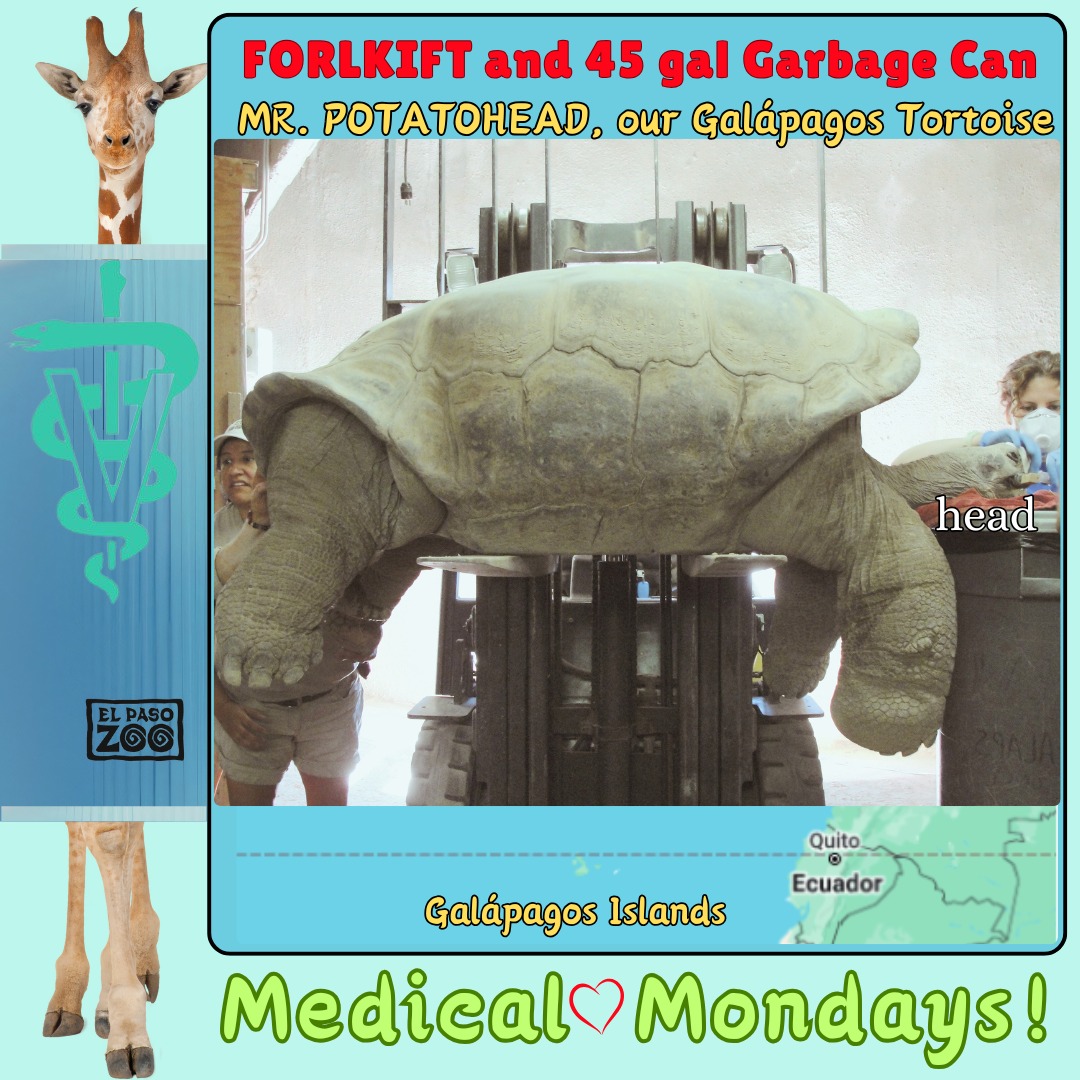- Understanding the intricacies of performing a medical procedure on a Galápagos tortoise.
- The role of anesthesia and specialized equipment in veterinary care for large reptiles.
- Techniques and considerations for ensuring the well-being of tortoises during medical procedures.
- The importance of preserving and caring for endangered species like the Galápagos tortoise.
- Insights into the operations and challenges faced by zoo and wildlife medical centers.
Performing a medical procedure on a massive Galápagos tortoise, weighing approximately 700 pounds, presents a unique set of challenges. This undertaking requires a well-coordinated approach due to the anatomical and physiological characteristics of these ancient creatures. Chief veterinarian Dr. Vikki’s description of handling such a case at the Animal Medical Center (AMC) offers a vivid glimpse into the complexities involved.
The intricate procedure on the tortoise, affectionately named Mr. Potatohead, begins with the administration of anesthesia. Anesthesia in reptiles, particularly tortoises, is a delicate process due to their unique metabolism and respiratory system. Unlike mammals, tortoises have lungs situated at the top of the body under the carapace, with other organs positioned below them. This anatomical arrangement necessitates precision to avoid complications such as lung compression during procedures.
One of the critical challenges is ensuring that the tortoise remains in a prone position. Simply flipping a tortoise onto its back can result in the compression of the lungs against the internal organs, threatening the animal’s respiration. To circumvent this, Mr. Potatohead was gently lifted with a forklift. This equipment, in combination with a 45-gallon garbage can that served as a support for the tortoise’s head, ensured that the lungs remained unobstructed during the medical procedure.
Intubation and mechanical ventilation were vital components of the procedure to maintain proper respiratory function. Intubation allowed veterinarians to secure the tortoise’s airway and deliver anesthetic gases effectively. Mechanical ventilation ensured consistent breathing, a critical element for the safety and success of the operation.
Care for such large and endangered species extends beyond the operating table. Galápagos tortoises are classified as vulnerable, with threats stemming from habitat destruction and introduced species. Preservation efforts are critical. These tortoises are not just animals but ambassadors for conservation, highlighting the importance of safeguarding their habitats. Veterinary care aligns with these efforts by ensuring the health and longevity of individual tortoises, contributing to the broader mission of species preservation.
The logistical elements involved in the procedure reflect the resourcefulness and dedication of the veterinary team. Most medical interventions on zoo animals are conducted at dedicated centers like the AMC. However, for larger animals, procedures often occur in situ to minimize stress and logistical challenges. Handling a giant tortoise involves considerable preparation, underscoring the importance of skills and experience in managing exotic and endangered species.
Zoo and wildlife medical centers often face significant challenges. The combination of animal size, specialized needs, and the unpredictability of wildlife behavior demands a high level of expertise and adaptability. Additionally, these centers operate within a framework of conservation, where veterinary practices not only focus on immediate care but also consider the long-term health and viability of species populations.
Understanding the needs of creatures like the Galápagos tortoise offers insights into the broader field of zoology and wildlife conservation. The knowledge and practices developed for treating these remarkable animals have far-reaching implications. They enhance our capabilities in veterinary medicine and strengthen conservation efforts worldwide. The experiences of professionals like Dr. Vikki demonstrate that through innovation and dedication, veterinary teams can overcome even the most daunting challenges in animal care, ultimately contributing to the survival of magnificent species like the Galápagos tortoise. This story reinforces the commitment to conservation and the pivotal role of medical advancements in protecting our planet’s wildlife heritage.
*****
Source Description
Welcome to MEDICAL MONDAYS!
How do you perform a medical procedure on the bottom shell (plastron) of a 700 lb. giant Galápagos tortoise? Dr. Vikki, chief veterinarian at our Animal Medical Center (AMC) responded: “With anesthesia, a FORKLIFT, and a 45 gallon garbage can (to rest their head on the top cover)! Mr. Potatohead was anesthetized, intubated, and ventilated while lifted by the forklift for this minor plastron procedure several years ago. It was important not to just roll him onto his back, because that would cause compression of his lungs. Tortoise lungs are located up top under the carapace (upper shell) with the other organs below them.”
Most of the procedures on our animals are done at AMC, but procedures on our bigger animals are done on grounds, such as with Mr. Potatohead.
https://whc.unesco.org/en/list/1/
_ _ _ _ _ _ _ _ _
¡Bienvenidos a LOS LUNES MÉDICOS!
¿Cómo se realiza un procedimiento médico en el caparazón inferior (plastrón) de una tortuga gigante de las islas Galápagos de 700 libras? ¡Con anestesia, un MONTACARGAS y un bote de basura de 45 galones (para apoyar la cabeza en la cubierta superior)! El Sr. Potatohead fue anestesiado, intubado y ventilado mientras lo levantaba el montacargas para este procedimiento menor de plastrón hace varios años. Era importante no simplemente ponerlo boca arriba, porque eso causaría la compresión de sus pulmones. Los pulmones de las tortugas se encuentran en la parte superior, debajo del caparazón (caparazón superior), con los otros órganos debajo de ellos.
La mayoría de los procedimientos en nuestros animales se realizan en nuestro Centro Médico Animal, pero los procedimientos en nuestros animales más grandes se realizan en terrenos, como con Mr. Potatohead.
https://whc.unesco.org/en/list/1/


